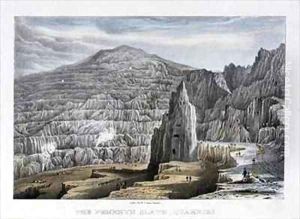W. Crane Paintings
Walter Crane was an English artist and book illustrator, born on August 15, 1845, in Liverpool, England. Crane is considered one of the most influential children's book creators of his time and was part of the Arts and Crafts Movement. His work featured a blend of classical style and medieval decorative design. He was also involved in the politics of the time, promoting socialist ideals through his art and associations.
Crane was apprenticed to the wood engraver W.J. Linton in London, where he developed his skills in illustration. His early work included designs for the woodblocks used in Edmund Evans's color printing. This collaboration led to the production of affordable and popular children's books, which made Crane's work widely recognized. He was influenced by Japanese prints and the Pre-Raphaelite Brotherhood, which is evident in his stylized natural forms and attention to detail.
He became a prominent figure in the Arts and Crafts Movement, working alongside William Morris to produce beautiful, handcrafted household objects that were both functional and artistic. Crane's illustrations often featured themes of nature, allegory, and fairy tales, and he believed in art's potential for social change. He wrote and illustrated his own books, such as 'The Baby's Opera' and 'The Baby's Bouquet,' which were notable for their rich color and use of line.
Throughout his career, Crane was also a teacher, a prolific painter, and an influential theorist. He wrote several books on design and art, such as 'The Bases of Design' and 'Line and Form.' Crane's commitment to the socialist cause was evident in his involvement with the Arts and Crafts Exhibition Society and the Socialist League. He lectured extensively on art and socialism both in Britain and abroad. Walter Crane passed away on March 14, 1915, in Horsham, West Sussex, but his legacy continued through his contributions to children's literature, illustration, and the Arts and Crafts Movement.
